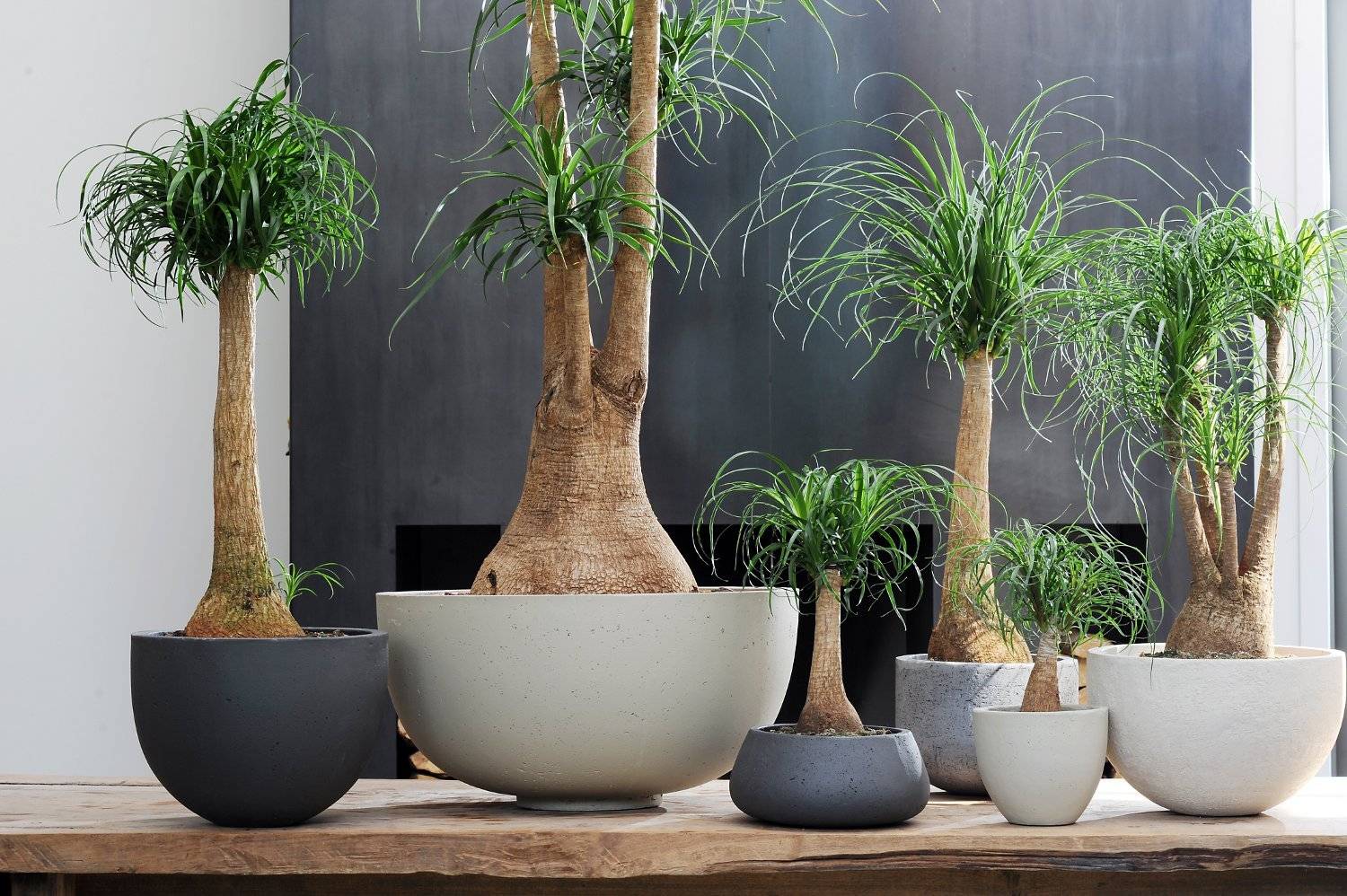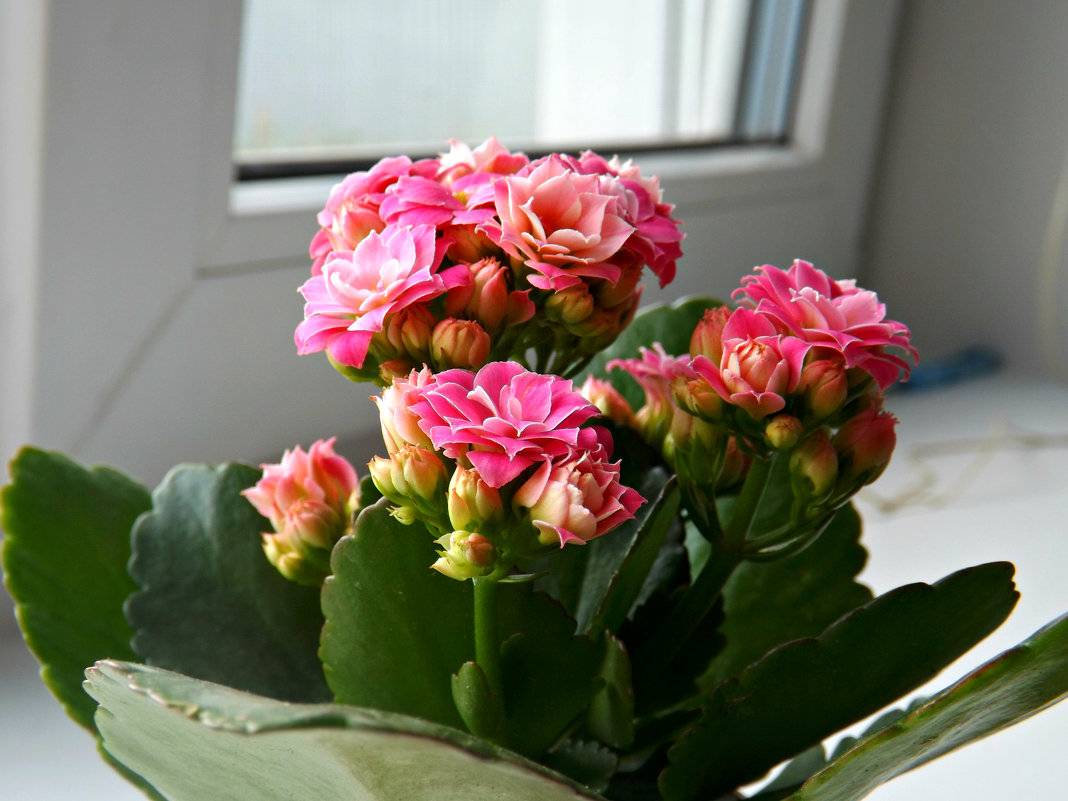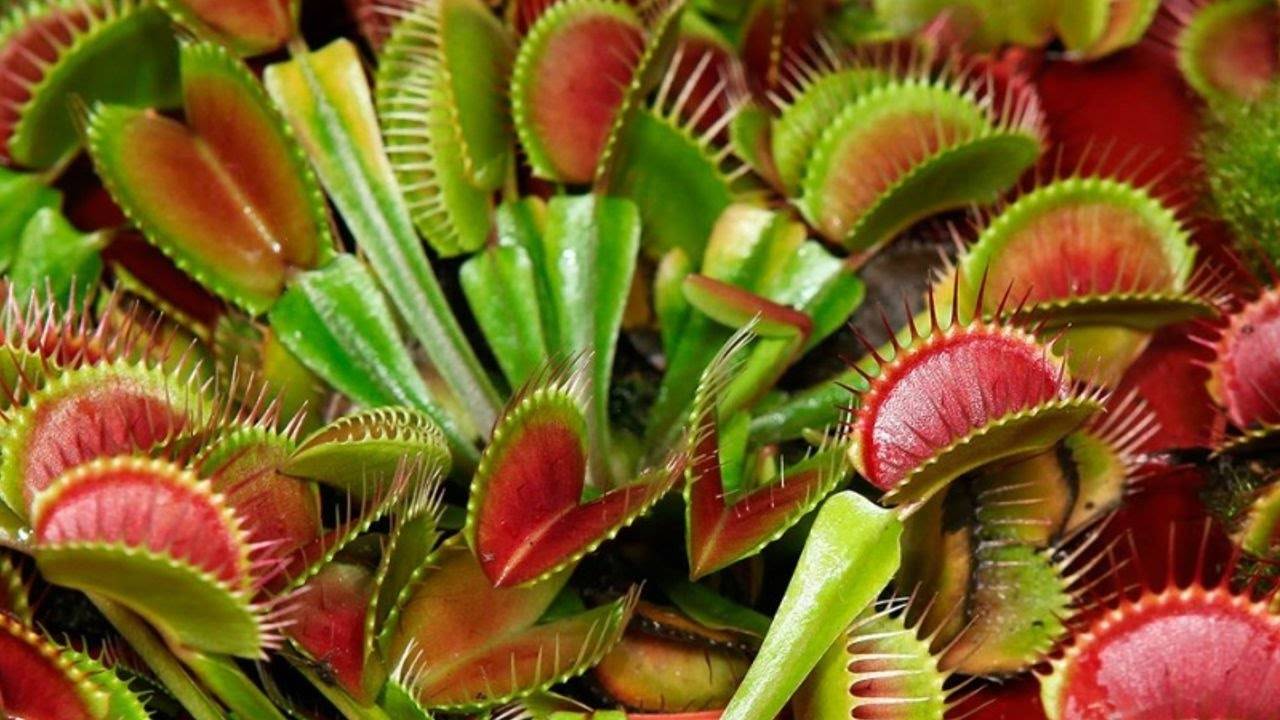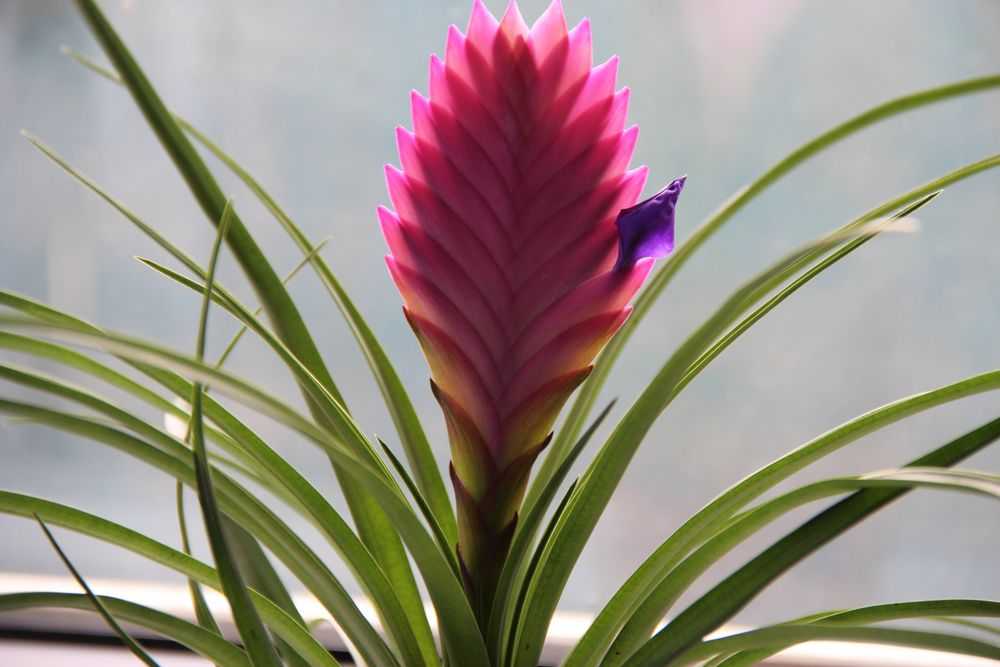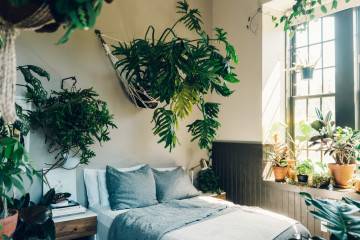Houseplants and beautiful house flowers
Content:
It is difficult to find a truly cozy apartment that does not have houseplants. Some twine around everything, others bloom magnificently, and others remind of a vacation in exotic countries. Often, flower growers wonder what kind of indoor plants can be brought into your home to decorate it and make the atmosphere original.
Houseplants and beautiful house flowers
All indoor plants can be divided into two broad categories - flowering and non-flowering. Of course, the most popular among flower growers are those representatives of the flora who delight the eye with lush flowering for several weeks or even months.
All about indoor plants
When choosing the types of indoor plants, it is extremely important to carefully study all the features of growing, the rules of care, including the irrigation regime and the need for top dressing. It is also worth asking whether the green part of the plant contains toxic substances.
It often happens that the homeowner chooses a suitable green pet for himself, rejoices in the delicacy of the leaves and the splendor of the flowering, but one of the household members may begin to feel attacks of suffocation. The fact is that some indoor plants are capable of releasing toxic substances in the process of life! It is not recommended to keep them in the house, but in office premises that are well ventilated, they will be quite safe.
Types of indoor plants
In fairness, it should be said that plants are divided not only into those that bloom or decorate the house with decorative foliage. In fact, they can be classified according to a variety of criteria.
Houseplants classification
Among the criteria by which you can group house flowers are the following:
- type of root system;
- belonging to a certain climatic zone;
- breeding method.
In addition, any indoor plants can be divided into three more fairly large groups:
- decorative deciduous (these include monstera and ficus);
- decorative flowering (for example, spathiphyllum)
- decorative flowering potted plants (these include the orchid).
Bulbous plants
Flowers that can be propagated by means of bulbs are called by flower growers the most spectacular in appearance. True, this only applies to the flowering period. Almost all bulbous flowers can delight the eye for a long time with their exquisite flower shapes and bright shades of petals.In order to be convinced of this, it is enough to recall such plants as clivia, villlota, amarcrinum and hemantus.
Representatives of this group need a large amount of diffused sunlight, an increased level of soil and air humidity, as well as warmth. That is why, in the case when the bulbous flower cannot form a bud, you should pay attention to the conditions of its maintenance.
Indoor trees
The so-called indoor trees are also quite widespread. These plants are miniature copies of real trees. The most popular representative of the category is bonsai. The advantages of this Chinese plant include its exotic appearance, densely leafy green crown and a powerful sturdy trunk.
Among others, which are no less popular, one can single out the bottle tree, the bastard tree, also called the money tree, the ficus and the rose tree.
Bromeliads
This is how gardeners call flowers, which are characterized by short trunks and a bunch of leaves collected in a neat rosette. Perhaps the most popular representative of the category is pineapple. However, this is far from the only plant in this group: the bromeliads include acanthostachis, bromelia, vriezia and tillandsia.
Ampel plants
This group includes beautiful indoor flowers, which are characterized by the presence of climbing shoots. Usually they are planted in pots suspended on the walls or under the ceiling, so that the long branches freely go down. Amrelias include cissus, which is also often called a room birch or grape. Other vines are also popular - for example, petunia, hoya, surfinia.
Succulents
This class of indoor plants can be called an example of vitality and unpretentiousness. Succulents do not need large containers and close attention. They need to be watered much less frequently than other indoor plants, and they do not need additional feeding.
The pot can be replaced with a small glass hemisphere that contains a small amount of special substrate. Thanks to this, designers love to use various succulents to compose original compositions.
Large indoor flowers
Large indoor flowers are often used to decorate spacious rooms, various offices, trading floors and lobbies. Besides the fact that they give comfort to too empty rooms, they are able to enrich the air with oxygen.
Indoor flowers with large leaves
The original looking spotted large greenery can instantly change the interior, adding originality and flavor to it. Designers and decorators recommend placing just 1-2 bright accents in small spaces, while large empty spaces can be filled with more colors.
Flowers with fleshy leaves
Anyone who has ever seen a money tree (crassula) knows that it has rather thick and dense leaves. Such trees do not grow quickly, however, with timely pruning and proper crown formation, in a short time you can achieve an amazing resemblance to a tree.
Thick leaves often have succulents, which accumulate water in green tissues. Zamioculcas can also be included in the list of plants with thick succulent leaves.
Small indoor plants
Miniature indoor flowers deserve special attention. They appeared thanks to the efforts of breeders, and they look exactly the same as their full-sized relatives.
Mini violets
The scientific name for these pretty flowers is dwarf saintpaulias.Despite the fact that both the bush itself and its leaf plates are several times smaller than those of ordinary violets, this does not negatively affect flowering. Mini violets are as vibrant and cute as full-size flowers.
Miniature Kalanchoe
It seems simply incredible, but a specially bred small Kalanchoe does not grow higher than 15 centimeters. As in the case of violets, dwarfism did not affect the flowering of the Kalanchoe: the small plant is literally strewn with delicate cream or red flowers.
Mini Gloxinia
Tiny gloxinia bloom just like regular sized gloxinia. This happens in the summer. After the plant has faded, it enters a dormant phase. At this time, its leaves die off, only the tuber remains, which must be preserved until spring, because a new green part will appear from it.
Mini roses
The main pink feature - and, like full-sized garden roses and potted beauties - is a pleasant sweet aroma. Tiny plants also bloom beautifully, and the shape of the leaf plates perfectly matches the garden flowers.
Fittonia
The main feature of this miniature plant is an interesting leaf pattern: they resemble quail eggs due to the fact that strict white lines contrast with rich greenery. The indoor flower prefers the warmth and diffused light of the sun.
Soleirolia
A tiny indoor flower is characterized by the presence of ampelous shoots. Saltrolium does not require any special care: in addition to regular watering in the hot months of the year, the flower will need additional spraying.
Popular houseplants flowering
It is difficult to imagine all the diversity of the plant world, which is suitable for keeping indoors. However, there is a standard set of green pets that thrive on windowsills and hanging pots.
White indoor flower
In the house of most flower growers, you can see perennial spathiphyllum. This indoor flower does not require close attention to itself, it is unpretentious. And he also pleases with a generous white flowering.
Abutilon hybrid: growing from seeds, home care
The blossoming tree-like flower can reach human height. Depending on the variety, blooms are coral, orange, deep red or maroon.
Despite the fact that abutilon is a light-loving plant, it absolutely cannot stand the heat. In the warm season, the air temperature in the room where the abutilone is located should not exceed +22 ° C. In winter, the optimum temperature is + 15 ° C. After the flower has bloomed, you can collect the seeds. They need to be hardened and then sown. The optimal time for this is February-March.
Gloxinia home - planting a tuber, care, problems
Gloxinia resembles violets in its appearance. However, there is a significant difference: its root system is a tuber, which is dormant in winter. After each wintering, the tuber must be woken up, otherwise the leaves simply will not appear. At the same time, you can treat the flower with a slightly pink solution of potassium permanganate and growth stimulants: this will protect gloxinia from diseases and awaken it.
To help the plant get out of sleep, place the tubers on a peat bed, spray them and keep the room temperature at 23-25 ° C.
Venus flytrap (Dionaea muscipula)
This unique plant fully justifies its name: it is really capable of hunting flies, thereby providing itself with additional nutrition. However, this does not mean that the flycatcher does not need regular moistening and feeding.
Calathea
Throughout the year, variegated calathea pleases the grower with its decorative appearance. The plant is capricious: during the growing season it requires frequent watering and spraying. Irrigation water should not contain salt impurities.
Calathea can be propagated by dividing the bush; the procedure should be carried out in early spring - during transplanting the plant into a new container. The flower will need good drainage, laid out in the bottom of the pot. When "relocating" it is important not to damage the root system - for this it is better to transplant calathea together with an earthen lump.
Indoor plants are not flowering
Some plants on which buds do not appear have also fallen in love with flower growers. Their original appearance attracts attention - most often these are non-flowering trees and vines.
Cissus
Like wild grapes, cissus is able to braid any objects with a web of thin shoots with spectacular green glossy leaves in a short time. The plant is unpretentious, tolerates shading and cold snaps.
Ficus
The ficus of the Elastica variety got widespread thanks to the unique leaf plates - they are dark green, shiny. The tree can grow quite tall, there are also ampelous varieties of ficus.
Fern
Ferns fell in love with flower growers for several reasons:
- Their varietal variety is so great that everyone can choose the option that suits him.
- Ferns create a tropical jungle atmosphere in the house.
Even in the absence of flowers, they look attractive.
Tropical home flowers
Houseplants belonging to this category attract attention due to their original appearance. In addition, they are usually characterized by non-standard ways of content.
Tillandsia blue (Tillandsia cyanea)
This tropical flower looks very original - most of its varieties need to be fixed on a snag or a piece of wood!
Homemade banana
The plant is characterized by slow growth - in a year it grows by only 90-100 centimeters, and this is subject to all the rules of care and agricultural technology.
Streptocarpus
An original exotic plant requires frequent watering, regular spraying and warmth from the grower. Due to the variety of species, you can choose the right type of flowering - from bellflower to cornflower blue!
List of houseplants alphabetically
What indoor indoor flowers can be called the most common and popular among flower growers, both amateurs and professionals? Here is a partial list.
Often, flower growers, especially beginners, are faced with a situation when they order the delivery of seeds or seedlings from specialized nurseries or from the same flower growers. The announcements promise that the new flower will bring happiness to the house, bring prosperity, and help establish a personal life. However, the planted seeds simply die.
Experts provide useful advice for such cases. You should not be lazy and look into the plant encyclopedia to find out which flowers in which region feel the most comfortable. Even home conditions, for example, in Lyubertsy or Norilsk, differ markedly from each other.Attention should be paid to the requirements of the flower - so, if it is shade-loving, you should remove it away from the window. But if all the requirements of agricultural technology are met, you can get an excellent green decoration for your home or office.

